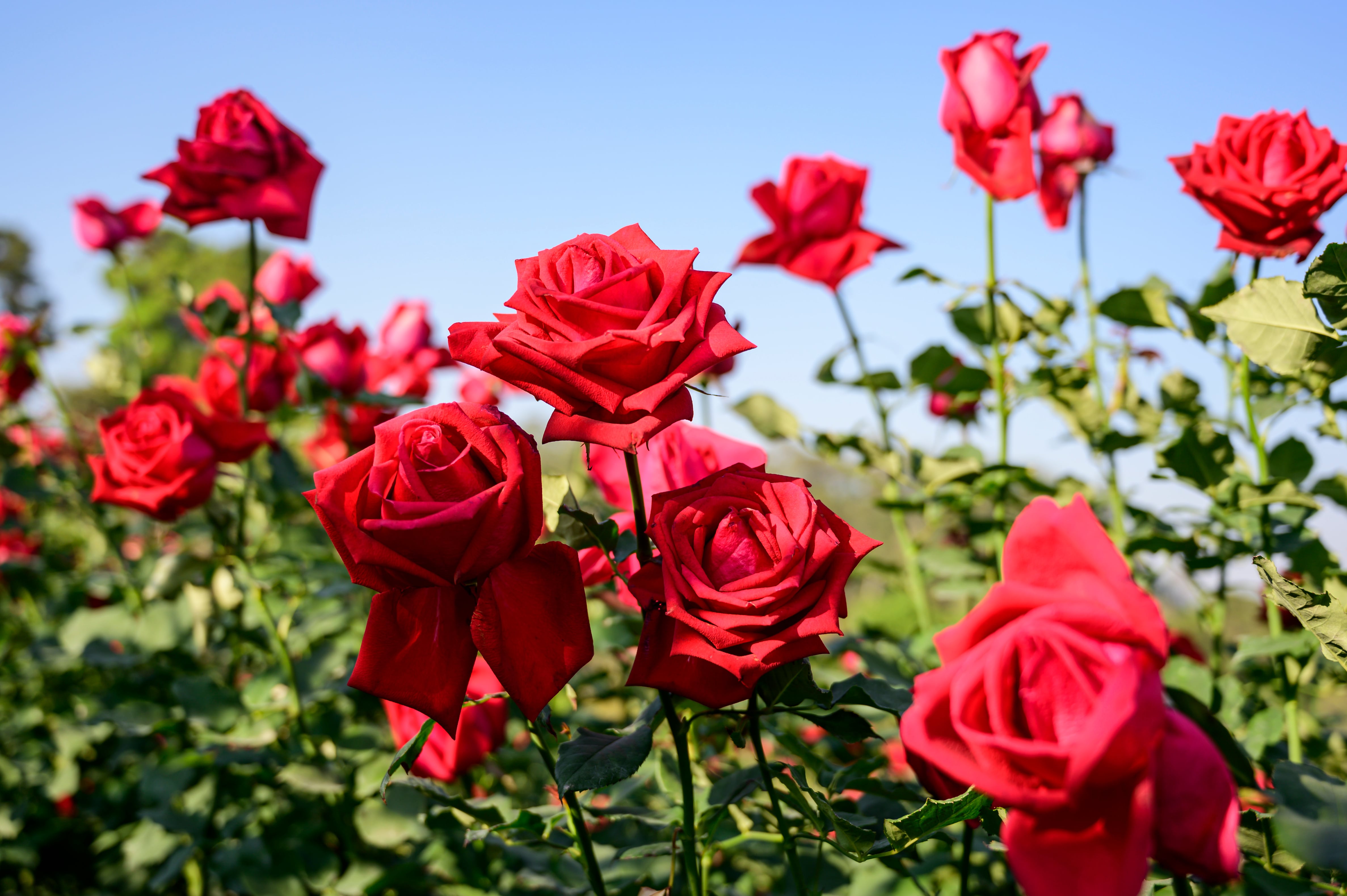Rose (Rosa indica) Cultivation
- Introduction
The rose (Rosa indica) belongs to the Rosaceae family and is considered the Queen of Flowers and the King of Flowers due to its beauty and fragrance. It is widely cultivated for commercial and ornamental purposes.
- Scientific Name: Rosa indica
- Origin: USA
Classification of Roses Roses are classified into various types based on their characteristics:
Classes of Roses
- Hybrid Tea: Large, highly scented flowers. Example: Gladiator, Papameilland, Landora, First Prize, Superstar
- Polyanthus: Dwarf plants with small flowers. Example: Anjani, Swati
- Floribunda (Hybrid Tea × Polyanthus): Bears characteristics of both parents. Example: Iceberg, Angleface, Queen Elizabeth, Sea Pearl
- Grandiflora (Hybrid Tea × Floribunda): Large flowers in clusters. Suitable for cut flower production
- Miniature Roses: Hardy plants with small leaves and flowers. Suitable for small gardens and pots
- Climbers: Large-sized flowers, Best for arches, pergolas, and pillars. Example: Golden Showers, Royal Gold, Delhi White Pearls
- Shrubs: Smaller than climbers, providing continuous flowering, Suitable for hedges and shrubbery, Example: Fountain, Cocktail, Butterfly Wings
Types of Roses Based on Stem Length
- Long-stemmed Roses (70-90 cm) – Large flowers (Hybrid Tea)
- Medium-stemmed Roses (50-70 cm) – Intermediate flowers (Floribunda)
- Short-stemmed Roses (30-50 cm) – Small flowers (Sweetheart Roses)
- Spray Roses – Small clusters of flowers (Spray Floribunda)
- Miniature Roses – Small-flowered (Sweetheart Roses)
Soil Requirements
- Grows best at higher elevations (above 1500 m)
- Soil should be loose, well-drained, and at least 50 cm deep
- Prefers fertile loamy soils with salt-free irrigation water
- pH range: 5.5 – 6.5
Climatic Requirements
- Temperature:
- Minimum: 15°C
- Maximum: 28°C
- Ideal: 25°C – 30°C (sunny), 18°C – 20°C (cloudy)
- Humidity:
- High relative humidity increases fungal diseases
- Greenhouses should have proper aeration to reduce humidity
- Light Requirement:
- More than 12 hours of daylight slows growth
- Greenhouse cultivation requires CO₂ levels between 500-1500 ppm
Propagation of Roses
Propagation Method: T-budding (Shield budding)
- Rootstocks Used:
- Rosa indica
- Rosa multiflora
- Rosa indica var. odorata
- Rosa Edward
- Process:
- Rootstocks should be 16-18 months old
- Budding is done on rooted cuttings
- Upper portion of the plant is cut off after 3 weeks to promote bud growth
Soil Preparation
- Separate topsoil and subsoil testing
- In saline conditions, flush soil with water
- Deep ploughing (40-50 cm depth)
- Maintain 10-12% humus in soil using:
- FYM (Farmyard Manure)
- Peat, rice husk, oil cakes, coir dust, bark compost
Soil Sterilization To prevent soil-borne diseases, sterilization is done using:
- Formalin 1% solution
- Chloropicrin fumigation
- Basamid granules @ 40g/m²
Bed Preparation
- Raised beds (Height: 30-40 cm, Width: 90 cm, Path: 60 cm)
- Beds should be parallel to the width of the field
Spacing of Rose Plants
|
Class |
Spacing (cm) |
|
Hybrid Tea |
120 × 120 |
|
Floribunda |
60 × 90 |
|
Miniature |
30 × 60 |
|
Climber |
90 × 120 |
Planting Time
- Small plants: April-May
- Larger plants: August-September
- Budded plants require high humidity for establishment
Post-Planting Care
- Greenhouses should be warm and humid for 1 month
- Ensure sufficient soil moisture to avoid transplant shock
- Overhead spraying of water during strong sunshine
Regulation of Flowering
- After last season’s harvest, irrigation and fertilization are stopped for 4-8 weeks
- Leaves drop naturally, and pruning is done at 30-60 cm height
- Irrigation & feeding resumed to stimulate bottom break growth
Irrigation
Drip and mist irrigation are preferred methods.
|
Season |
Water Requirement (Liters/m²) |
|
Rainy |
5-6 L |
|
Winter |
6-8 L |
|
Summer |
8-10 L |
Fertilization Fertilization through fertigation (drip irrigation-based nutrition).
|
Nutrient |
Amount (mMol/L) |
|
Nitrogen (N) |
3.0 |
|
Potassium (K) |
3.5 |
|
Calcium (Ca) |
2.0 |
|
Magnesium (Mg) |
1.1 |
|
Sulfur (S) |
1.1 |
Pruning (To improve flowering & framework)
|
Time |
Type of Pruning |
|
June |
Light pruning |
|
October |
Medium pruning |
|
October |
Hard pruning |
Harvesting
- Tight Bud Stage: For long-distance markets
- Fully Open Flowers: For local markets
- Yield: 150-200 flowers/m²
Special Cultural Practices
- Support System: Wires and posts used at 3m intervals. Keeps plant stems upright
- Disbudding: Removal of side buds to enhance quality of the central bloom
- Bending: Ensures continuous leaf cover for photosynthesis, Stems are bent at 45° angles to maintain apical dominance
- Bottom Break (Ground Shoots) Essential for lifelong plant productivity, Strong shoots cut at 5-leaf pairs, weaker shoots at 2-3 leaf pairs


